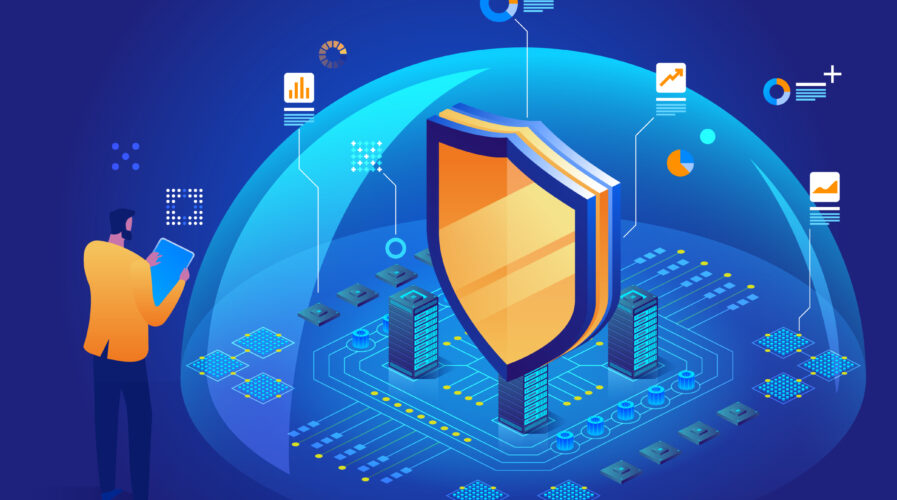
A new study reveals APAC enterprises know the importance of cybersecurity and digital transformation this year. Source: Shutterstock
Cybersecurity becomes top priority for APAC business leaders in 2020
- Despite economic uncertainty, APAC enterprises prioritize cybersecurity and digital transformation needs to ensure business continuity
While a brittle economy clouds enterprise spending plans in 2020, one thing is for certain, cybersecurity trumps most budgetary concerns for Asia Pacific (APAC) businesses.
In fact, the 2020 CrowdStrike Asia Pacific and Japan (APJ) State of Cybersecurity Report found that just shy of three quarters (74%) of APAC business leaders listed enhancements of cybersecurity measures as a priority for additional investment, while 65% are expecting IT budgets to increase, despite the grim economic outlook following the COVID-19 pandemic.
CrowdStrike’s latest study surveyed 2,017 business leaders in Australia, New Zealand, India, Singapore, Philippines, Thailand, Malaysia, Indonesia, Hong Kong and Japan, and found that the virtual threat to the ‘new normal’ workplace is very much present post-COVID-19 – the report showed an increase in online crime activity that is 330% above 2019 reports.
Prior to the global pandemic, a Cisco study was already reporting that nearly half (46%) of cybersecurity professionals in APAC were receiving in excess of 10,000 cybersecurity alerts every day, compared to their counterparts in other parts of the world, with a global average of just 35%.
But the pandemic-led quarantine and its subsequent lockdown measures saw an exponential spike in cybercrime intensity and volume from the end of Q1 2020 onwards – a situation that could be exacerbated by the swift shift towards remote working.
Fortunately, a good many enterprise leaders in APAC are aware of the importance of readying their organizations and employees with cybersecurity education. However, 36% of respondents had not received any alerts or communications about COVID-19 themed malware that’s been rampant. Worryingly one in five business leaders wouldn’t know what to do in the event of a data breach, which is now costing businesses an average of US$3.86 million in 2020.
A shot in the arm for DX
While c-level execs must reassess their priorities (and budgets) as they ease into post-pandemic recovery, CrowdStrike’s report indicated that many APAC enterprises were experiencing an unprecedented wave of digital transformation, driven by the need to outlast uncertain economic prospects, including newly-distributed workforces and new supply chain channels.
In fact, 44% of business leaders surveyed said the pandemic accelerated their move to cloud solutions, while 82% say COVID-19 changed the way they interact with or deliver products and services to customers. These results indicate a strong shift and rapid investment towards transformation projects that move from on-premise security solutions to next generation cloud-native solutions as organizations look to shore up new remote staff.
Business leaders have changed their outlook on flexible working too; 67% of APAC business leaders believe that their organizations should invest more in building a remote work environment. Meanwhile, the top cybersecurity challenges expected in the next 18 months include a remote workforce (54%), new regulation (49%) and the cost of compliance (48%), with limited budgets (47%) and additional training (41%) ranking not far behind.
“The COVID-19 pandemic may have had the biggest impact on the way organizations operate since the introduction of office PCs. The reaction of business leaders has been impressive, but the speed and size of change to a remote workforce led to some inevitable gaps, particularly in the cybersecurity of organizations,” commented Andrew Littleproud, Vice President, APJ at CrowdStrike.
“Our findings show that respondents understand these gaps and expect to address them in the recovery, going beyond ‘good enough’ security measures to ensure their employees remain secure against sophisticated threat activity regardless of where they are located. In the new business normal, it will be vital to implement solutions that can be quickly deployed at scale to detect new threats, adhere to new regulations and leverage the cloud so they can be easily managed remotely.”
READ MORE
- The criticality of endpoint management in cybersecurity and operations
- Ethical AI: The renewed importance of safeguarding data and customer privacy in Generative AI applications
- How Japan balances AI-driven opportunities with cybersecurity needs
- Deploying SASE: Benchmarking your approach
- Insurance everywhere all at once: the digital transformation of the APAC insurance industry


